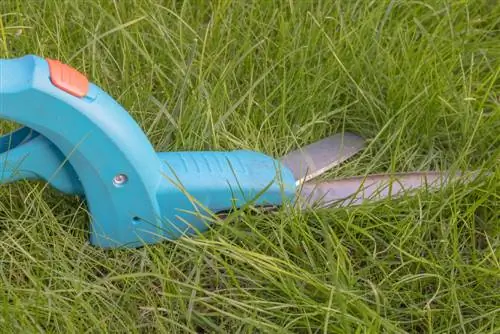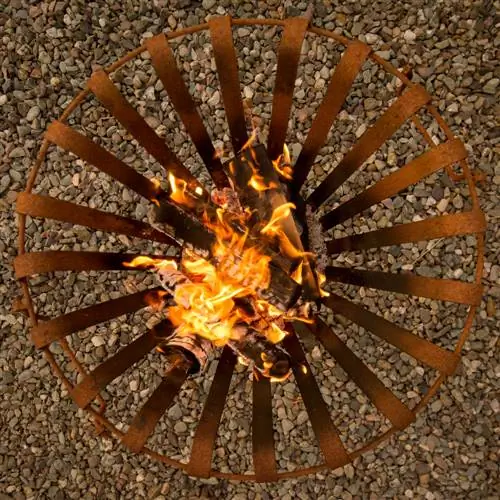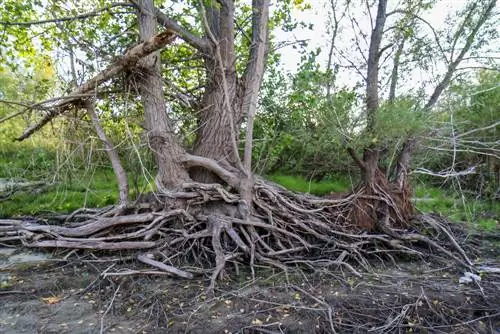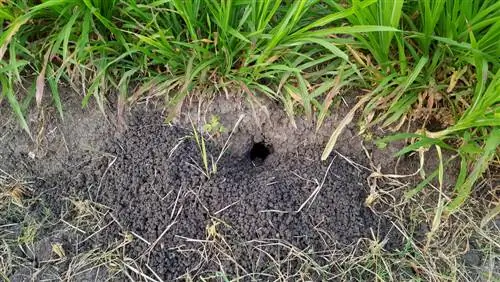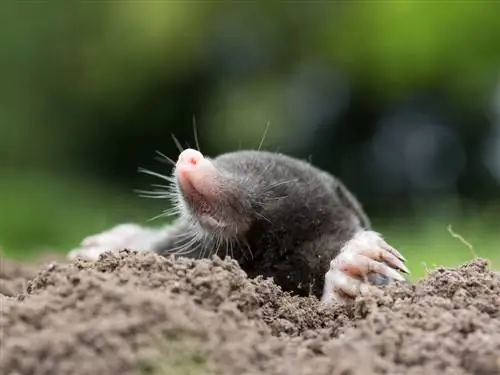- Author admin [email protected].
- Public 2023-12-16 16:46.
- Last modified 2025-06-01 06:02.
The giant hogweed has developed into a real nuisance: once imported to Europe as an ornamental plant, the aggressive neophyte is now displacing native plants and is also extremely dangerous due to its toxicity: just touching it can cause serious burns from the fine nettle hairs cause. It is therefore extremely important to destroy the plant as soon as it appears somewhere.
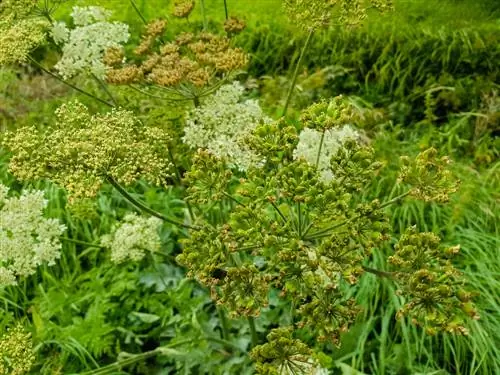
How can you effectively combat giant hogweed?
In order to successfully combat giant hogweed, you should remove the flowers in good time, dig up the plant and its rootstock or, in the case of large-scale infestations, mow and mill regularly. Always make sure to wear suitable protective clothing and dispose of plant residues safely.
No fight without protective clothing
However, before you get to work, you should first put on protective clothing to protect your eyes, skin and mucous membranes from the nettle hairs and plant juices. It's important
- Covering the entire body with sturdy clothing and closed shoes
- This also applies to the face!
- Wear sturdy protective gloves.
- Protective glasses made of plexiglass and with side protection are also mandatory.
Furthermore, all measures should take place on a day with a clouded sky: injuries with hogweed mainly occur under the influence of sunlight.
Successfully combating giant hogweed - methods
Giant hogweed can be effectively controlled using mechanical methods, whereas the use of herbicides and other chemical substances is generally not permitted - especially not in recreational areas or near bodies of water!
Timely removal of flowers/seeds
The huge flower umbels of the giant hogweed produce up to 50,000 seeds, which are spread widely by wind, water, animals or vehicles. For this reason, the flowers may not even reach the seed formation stage. So separate the flower umbels by June at the latest.
Dig up including the rootstock
However, it is better and more effective to dig up the entire plant straight away. You should use a sharp spade (€59.00 on Amazon) to dig at least 15 centimeters deep into the ground and, in addition to the above-ground parts of the plant, also the rootstock, which is not unlike a turnip - called a vegetation cone - should be separated or removed.be completely excavated. The giant hogweed cannot then sprout again due to the lack of roots. If you want to be on the safe side, remove the soil layer, dispose of it and add new soil.
Mowing / milling
However, digging up the plant only makes sense for individual specimens. Sometimes, however, larger areas are infested, which then have to be regularly mown close to the ground and, if possible, milled up to 15 centimeters deep. Start in May and repeat the procedure every ten days - all summer long. Allow sheep or goats to graze, if available. The animals don't mind the poisonous plant and eat it in time. Giant hogweed is therefore almost never found in grazed areas.
Safe disposal of plant residues
To dispose of the plant remains safely, you would have to burn them. The giant hogweed does not belong in the compost, not in the organic waste and actually has no place in the residual waste.
Tip
Some people scalde the affected areas with hot water. This thermal method is actually effective, as roots and seeds are killed by the heat. However, this also applies to all other plants in the area in question, which is why it is better to use a different method.


